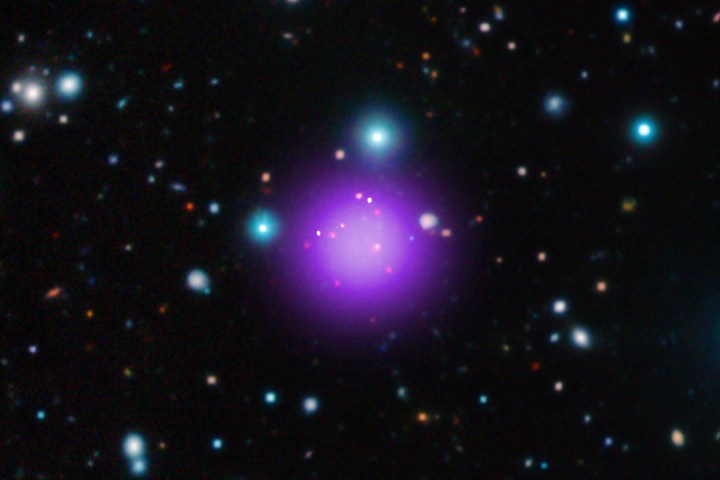
“This galaxy cluster isn’t just remarkable for its distance, it’s also going through an amazing growth spurt unlike any we’ve ever seen,” lead author Tao Wang of the French Alternative Energies and Atomic Energy Commission (CEA) said in a statement.
Eleven massive galaxies call the cluster’s core home, and nine of those galaxies are bursting with young stars forming at the rate of 3,400 suns per year.
Galaxy clusters form when a group of galaxies come together into the largest gravity-bound structures in the known universe.
“It appears that we have captured this galaxy cluster at a critical stage just as it has shifted from a loose collection of galaxies into a young, but fully formed galaxy cluster,” co-author David Elbaz from CEA said.
CL J1001’s cosmic neighbors are all proto-clusters, those loose collections of galaxies described by Elbaz. As such, astronomers and astrophysicists suspected that only proto-clusters formed at that distance. They were also surprised to find that many stars don’t seem to form until the galaxies have already collected.
CL J1001 is truly unique. Astronomers have never witnessed cluster formation at this stage. It’s so rare, in fact, that clusters like it aren’t even found in the most sophisticated of today’s cosmological simulations.
“We think we’re going to learn a lot about the formation of clusters and the galaxies they contain by studying this object, and we’re going to be searching hard for other examples,” said co-author Alexis Finoguenov of the University of Helsinki in Finland.
A paper detailing the discovery appeared this week in The Astrophysical Journal.
Editors' Recommendations
- Hubble smashes record for most distant star ever seen
- Amateur astronomer identifies rare double nucleus in the Cocoon Galaxy
- Impending collision of Milky Way with other galaxy is already creating new stars
- Astronomers discover a cosmic Yeti: A massive galaxy from the early universe
- Astronomers have found the most massive neutron star ever detected


